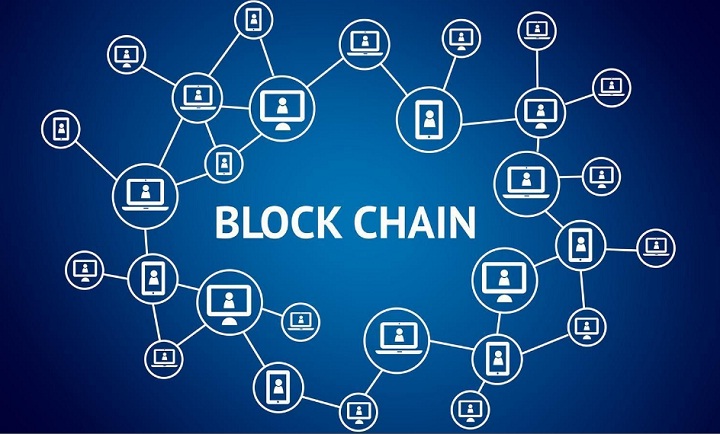By now, you probably have heard of cryptocurrency and bitcoin. And as of late, the term “Blockchain” has made huge waves in the technology sector. There is a considerable amount of hype surrounding blockchain technology, and do you know why that is? It’s because more and more people are finally starting to understand the implications of the technology.
Perhaps this is because it is easy to picture high-level use cases. However, blockchain technology has also been closely examined. In fact, millions of dollars have been spent researching the technology over the course of the past few years. Not only that but there have been a number of tests conducted that look at whether or not blockchain technology is appropriate in certain scenarios.
And while blockchain technology can, at times, appear to be a far-out claim, leaders and high ranking executives around the world are staking their careers on it. As Don Tapscott said: “The first generation of the digital revolution brought us the Internet of information. The second generation — powered by blockchain technology — is bringing us the Internet of value: a new platform to reshape the world of business and transform the old order of human affairs for the better.”

Let’s dive into the basics and discuss why you should use blockchain technology:
What is blockchain exactly? Well, it can be somewhat complex at times. It tends to be beyond the grasp of most people, but if you are able to retain the basics of the technology, you will be one of the people eligible to take advantage of the forthcoming blockchain revolution before everybody else catches up.
For all the intrigue and mystery surrounding it, Blockchain is essentially a way of keeping records. Blockchain technology offers new tools for authorization and authentication in the digital world that prevent the need for centralized administrators. Because of this, it allows for the creation of new digital relationships.
Blockchain technology formalizes and secures new digital relationships, which means the blockchain revolution is set to create the backbone of a layer of the internet for transactions and interactions of value (sometimes referred to as ‘Internet of Value’, as opposed to the ‘Internet of Information’, which entails using the client-server, accounts and master copy databases.)
However, when it comes to building the digital backbone of a new transactional layer to the internet, private cryptographic keys and cryptocurrencies are not the right way to go.
The majority of groups have developed flowcharts in order to help a person or entity decide between a blockchain or master copy, client-server database. Here are a few factors that are a distillation of much of what has been previously done:
Can the Data be Controlled by a Central Authority? If so, Should it Be?
There are a number of reasons as to why a third party should be in charge of some authorizations and authentications. In fact, there are times when third-party control is totally appropriate and necessary. If privacy of data is something you’re looking for, there are a number of ways to secure the data without even connecting it to a network.
However, if previously existing IT infrastructure featuring log-ins and accounts is not enough for the security of digital identity, it is unlikely that the problem will be solved by blockchain technology.
As Satoshi Nakamoto, creator of Bitcoin, wrote in his (or her) seminal work, “Bitcoin: A Peer-to-Peer Electronic Cash System”: “Merchants must be wary of their customers, hassling them for more information than they would otherwise need. A certain percentage of fraud is accepted as unavoidable.”
For those who don’t know, private key cryptography activates push transactions, which is a transaction that does not require centralized systems and the fancy, elaborate accounts used to create digital relationships. If for instance, this database requires millions of dollars to secure lightweight financial transaction, then it is likely that blockchains will be the solution to the problem.

What is the Most Important Consideration? Is it the Speed of the Transaction?
Many find themselves asking the question of: does this database ask for high-performance millisecond transactions?
If that is what is required, then it is best to stick with a conventional-model centralized system. As databases, blockchains tend to be slow and there is a cost to storing the data – which is mining every block in a chain. As of right now, centralized data systems are far less expensive and are much faster as they are based on the client-server model.
Is the Data Dynamic with a Detectable History?
Due to the complexity of physical seals and/or appearances, paper can be difficult to counterfeit. Similar to carving something in stone, paper documents tend to have a certain permanence.
However, if the data is in constant flux, then paper may not be able to keep up the system of record. Further, manual data entry has its fair share of human limitations.
Therefore, if the data and its history are crucial to the digital relationships they help create, then blockchains offer flexibility and allow parties to write new entries into a system of record that is held by a number of custodians.
The Takeaway
As of right now, we do not know the full limits and potential of blockchains, but we do know that the use cases which have passed inspection have all been focused on securing and managing digital relationships as part of a system of records.
To simplify, the future of blockchain is still unraveling, but the next couple of years will be extremely crucial as they will be spent experimenting and applying the technology to all aspects of society. The bottom line, however, is that this technology is not going anywhere anytime soon. When there is a decentralized, permanent record of an asset, blockchain allows for us to use the internet not just to exchange information, but to exchange value without needing a third-party (such as we do with PayPal Holdings or credit card vendors). This will, whether you see it or not, transform how our society functions.
Featured Image: twitter




